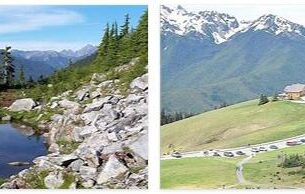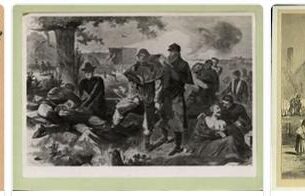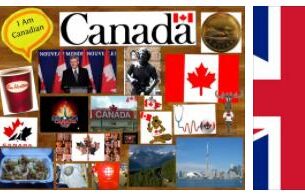The tertiary sector contributes to the country’s GDP by covering almost 70.9%. Internal trades make use of a distribution service similar to that of the United States, based on large supermarkets. Many consumer goods are imported (mainly from the United States) as Canada has not yet reached a sufficiently large variety of manufacturing industries. The country, however, is one of the main in the world for the volume of import-export traffic (equal to 3.3% of the world total). The most important imports concern machinery, chemicals, electrical equipment, fruit and vegetables, oil, consumer goods. According to ezinereligion, Canada mainly exports vehicles and their parts, minerals such as petroleum and derivatives, natural gas, telecommunications machinery and equipment, paper, timber, plastics, aluminum, medicines and some food products such as meat. As already mentioned, Canada’s trade balance is negative (-19,155.1 ml US $). Trade takes place mainly with the United States, which absorb more than three-quarters of Canadian exports and here transfer 65.5% of their products; followed by Japan, the United Kingdom, China, Mexico, the European Union, South Korea and Taiwan. This attests to the new orientations of Canadian economic policy, in search of its own individuality in the world context. The recent growth recorded along the western strip of the country, in addition to marking the internal transformations of Canada, also identifies a trend common to the neighboring United States; the attention turned to the West, in fact, it represents the signal of a passing of the baton between the old economic center represented by the Atlantic to that of the Pacific and the countries bordering it. § At the service of internal exchanges, encouraged by a notable regional economic diversification, there is a very extensive communications network, albeit with very different development, passing from the eastern to the central provinces. The railways run for a total of 48,150 km; fundamental are the transcanadian lines (The railways run for a total of 48,150 km; fundamental are the transcanadian lines (The railways run for a total of 48,150 km; fundamental are the transcanadian lines (Canadian Pacific Railway and Canadian National Railways), which connect the Atlantic region to Vancouver, and from which numerous arms branch off that go northwards as far as Churchill on Hudson Bay, Lynn Lake and Pine Point on Great Slave Lake, while towards S they connect with the US network. The road network is also efficient (with 1,130,000 km of roads), covered by over 24 million vehicles; of particular note is the Transcanadiana (Trans Canada Highway) which connects Saint John’s (Newfoundland) with Victoria (Vancouver Island). Towards the N, two major freeways come as far as Yellowknife (Mackenzie Highway) and Anchorage, Alaska (Alaska Highway): the latter was built during the Second World War, for military purposes, in collaboration with the United States. The air network is also dense and, given the vastness of the country, plays a fundamental role, especially for communications with the isolated centers of northern Canada. Numerous airports: Toronto, Vancouver, Montreal, Ottawa, Winnipeg, Dorval, Victoria. The internal navigation lines play a prominent role thanks to the connections of the Central Plains with the Great Lakes and of the latter with the Atlantic; Québec, Montréal, Toronto, Thunder Bay are the main ports of the Saint Lawrence Seaway along which an important traffic of goods takes place, but which in winter remains blocked by ice. The main port is, Vancouver, a maritime outlet for all of western Canada, flanked by Sept-Iles / Pointe Noire, Montréal, Thunder Bay, Hamilton, Port Cartier, Halifax, Québec, Toronto and Saint John. § Tourism constitutes a conspicuous source of income, also thanks to the presence of numerous parks. The sector is growing, thanks also to the incentive for the promotion of reception facilities. Canada is visited annually by tens of millions of foreigners, mostly from the United States.
Quebec (city)
Quebec [kve bεk, English kw ɪ bek], French Quebec [ke bεk], Ville de Quebec, Quebec City, capital of the province in Canada, on the left bank of the St. Lawrence River, whose estuary starts here as a Metropolitan Area (2019) 824,400 residents (546,400 residents in Quebec itself).
Catholic archbishopric and Anglican bishopric; Université Laval (founded in 1663 as a seminary of the Jesuits, university since 1852), Open University (founded in 1972), National Archives of Quebec, various museums (Musée des Beaux Arts, Musée de la Civilization, Musée Naval de Québec, etc.). The city, with over 90% of the population of French descent and the majority of whom use French as a colloquial language, is the center of the cultural life of the French Canadians and a center of attraction for tourists, as well as the location of food, paper, electrical and environmental engineering, but only 13 % of employees work in industry and construction, the most important sector being public administration, as well as financial services and software development. The port on the St. Lawrence Seaway has large grain silos and is an important landing stage for cruise ships; international Airport.
Quebec was built in the style of the French cities of the 18th century, with a city wall (completed in 1832, today a national monument) and a citadel (1820–32, today a museum and barracks). The historic old town (UNESCO World Heritage Site) is divided into an upper and a lower town by an approximately 100 m high cliff and is dominated by the brick high-rise building of the Hotel Château Frontenac (1892). Also noteworthy is the small stone church Notre-Dame des Victoires (1688) on Place Royal, where Quebec was actually founded; the Hôtel-Dieu du Précieux-Sang (1654 ff.), the oldest hospital building in North America; the Ursuline monastery (founded in 1639); the Anglican Trinity Cathedral (1804; restored after fire and consecrated in 1925); extensive renovations in the old town. M. Safdie (opened 1987).
Quebec, founded in 1608 by S. de Champlain (name derived from Indian »Kebek«, »at the confluence of the waters«), which was occupied by the English in 1629–32 and besieged by them unsuccessfully in 1690 and 1711, was through to the permanent conquest British troops 1759 center of the French colony New France. In 1774 the British government passed the Quebec Act (Canada, History). In 1791 Quebec became the capital of the Province of Lower Canada, and in 1867 of the Province of Quebec.




